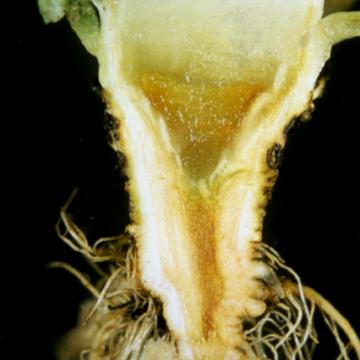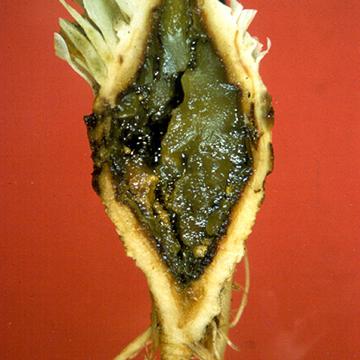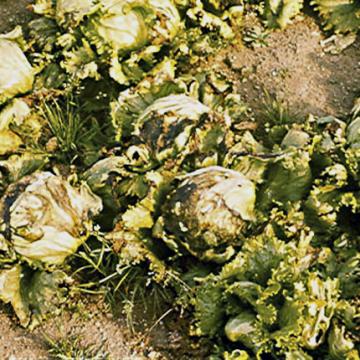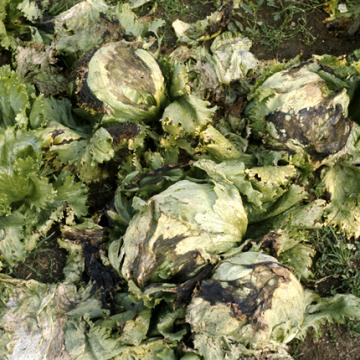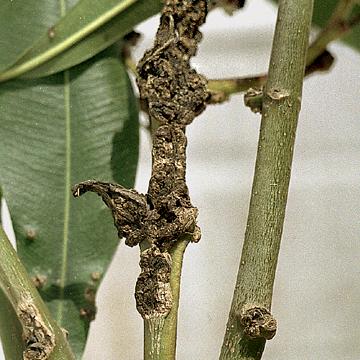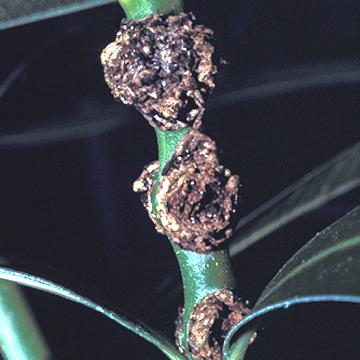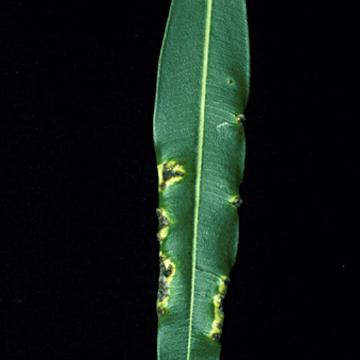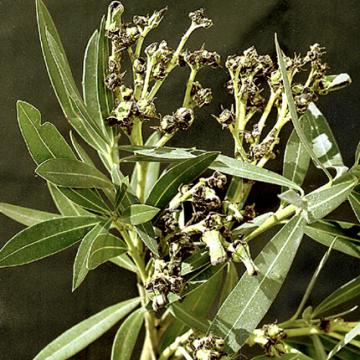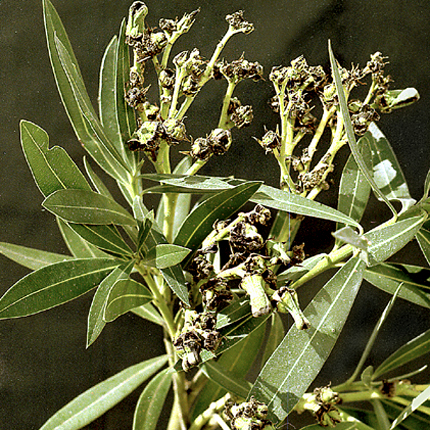DISEASE: Head rot (Jelly rot)
HOST: Lettuce
Sliced head of lettuce. Typical symptoms are a translucent appearance and browning or jelly rot of the stalk (crown).
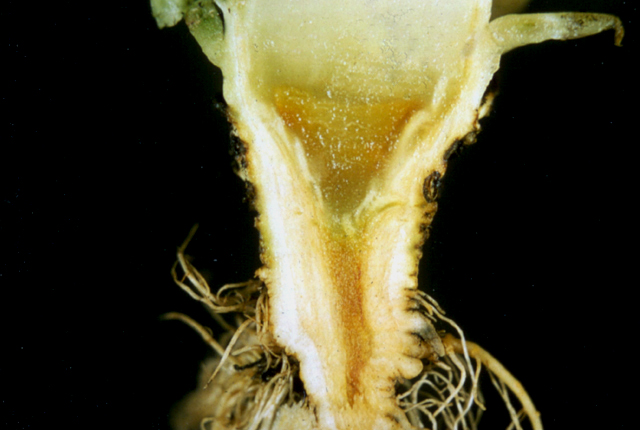
Head rot (Jelly rot) | Lettuce
DISEASE: Head rot (Jelly rot)
HOST: Lettuce (Lactuca sativa)
PATHOGEN: Pectobacterium carotovorum
PATHOGEN SYNONYM: Erwinia carotovora subsp. carotovora
SOURCE: J. Cho, A. Alvarez
DISEASE: Head rot (Jelly rot)
HOST: Lettuce
Advanced stage of lettuce stalk rot (crown).
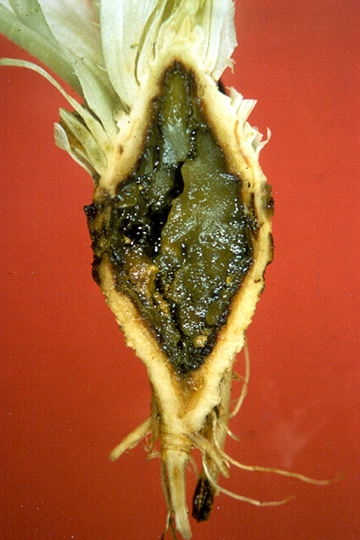
Head rot (Jelly rot) | Lettuce
DISEASE: Head rot (Jelly rot)
HOST: Lettuce (Lactuca sativa)
PATHOGEN: Pectobacterium carotovorum
PATHOGEN SYNONYM: Erwinia carotovora subsp. carotovora
SOURCE: J. Cho, A. Alvarez
DISEASE: Head rot (Jelly rot)
HOST: Lettuce
Head rot of lettuce first appears as rapid wilt of outer wrapper leaves. Wilt is caused by collapse of vascular tissues, which develop a pinkish to brown discoloration.
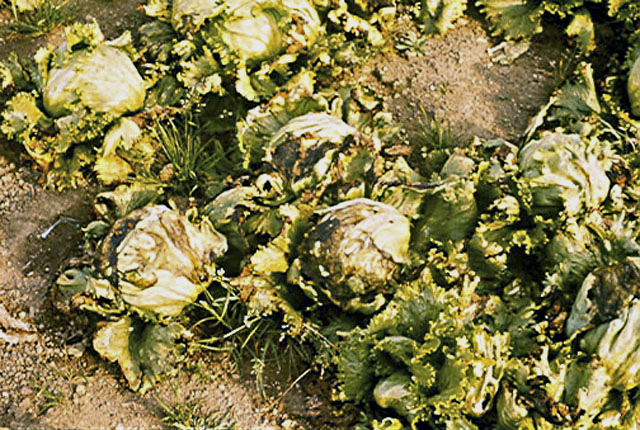
Head rot (Jelly rot) | Lettuce
DISEASE: Head rot (Jelly rot)
HOST: Lettuce (Lactuca sativa)
PATHOGEN: Pectobacterium carotovorum
PATHOGEN SYNONYM: Erwinia carotovora subsp. carotovora
SOURCE: L. Fucikovsky
DISEASE: Marginal leaf blight
HOST: Lettuce
Marginal leaf blight first appears as slimy wilting of leaf margins. Small, reddish lesions may be seen on leaf blades. Infected tissues turn brown to black in time.
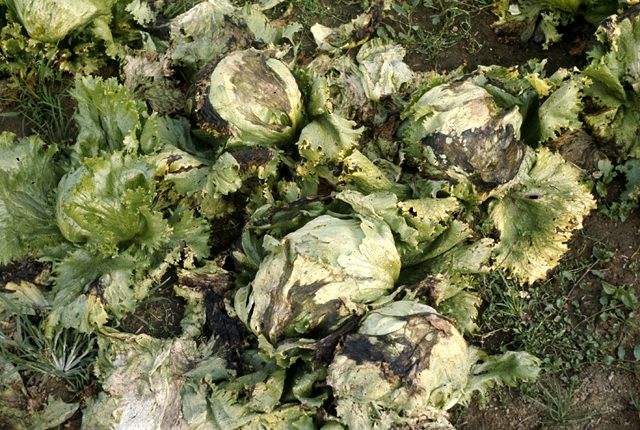
Marginal leaf blight | Lettuce
DISEASE: Marginal leaf blight
HOST: Lettuce (Lactuca sativa)
PATHOGEN: Pseudomonas marginalis
SOURCE: L. Fucikovsky
DISEASE: Oleander knot
HOST: Oleander
Oleander with small knots/galls on leaf and stems.
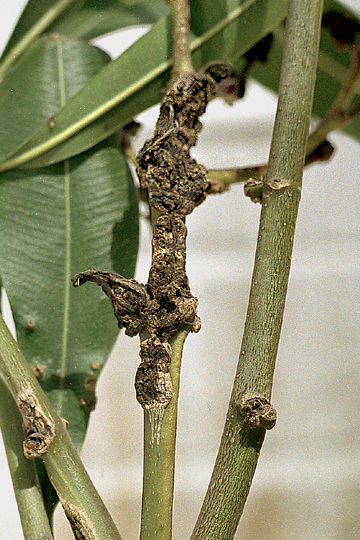
Oleander knot | Oleander
DISEASE: Oleander knot
HOST: Oleander (Nerium oleander)
PATHOGEN: Pseudomonas savastanoi pv. nerii
SOURCE: W. Sinclair
DISEASE: Oleander knot
HOST: Oleander
Young stem with knots/galls.
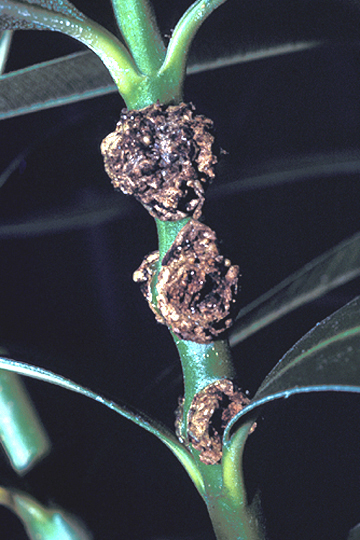
Oleander knot | Oleander
DISEASE: Oleander knot
HOST: Oleander (Nerium oleander)
PATHOGEN: Pseudomonas savastanoi pv. nerii
SOURCE: R. Raabe
DISEASE: Oleander knot
HOST: Oleander
Leaf with early stage of knot/gall formation.
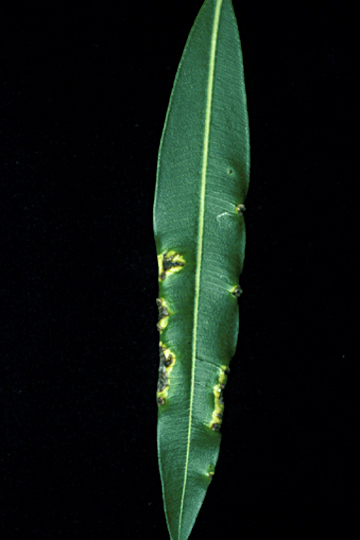
Oleander knot | Oleander
DISEASE: Oleander knot
HOST: Oleander (Nerium oleander)
PATHOGEN: Pseudomonas savastanoi pv. nerii
SOURCE: R. Raabe


